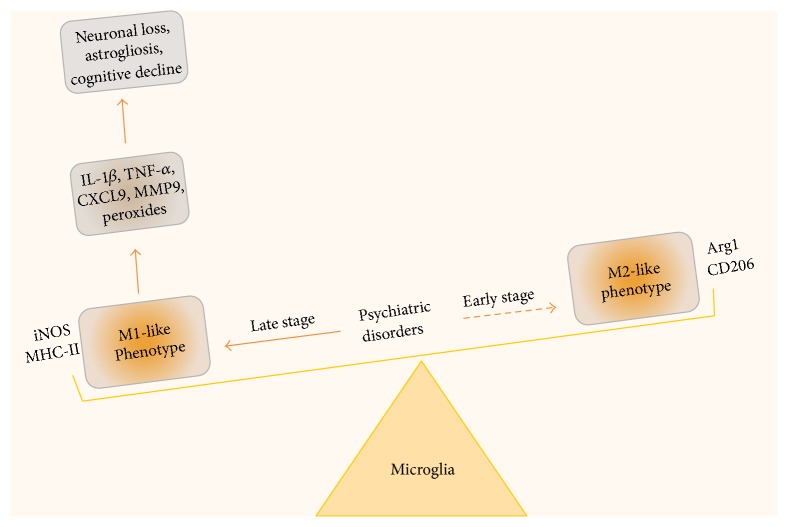Figure 1.
Potential mechanism of microglia activation in psychiatric disorders. Neuroinflammation is one of the key components of the pathogenic mechanisms underlying several psychiatric disorders and is often associated with microglial activation/dysfunction. Accumulating evidence indicate that M1-like microglia (proinflammatory) are significantly increased in comparison to ramified microglia (resting) and elongated M2-like microglia (anti-inflammatory) phenotypes in disease states. The levels of M1-like microglia in brain predominate and potentially can be associated with the severity of the disease, suggesting an imbalance in M1/M2 phenotype. M1-like microglia are characterized by the expression of MHC class II antigens and by the production of proinflammatory cytokines and nitric oxide synthase (iNOS). Continued production of proinflammatory cytokines can lead to neuronal damage, astrogliosis, plasticity, and cognitive decline. Peripherally derived macrophages and monocytes also participate in the inflammatory response. It is likely that during early stage of disease onset microglia can have phenotypic switch to an alternative state knows as M2-like phenotype, which are characterized by presence of surface markers like Arginase 1 and mannose receptor CD206, leading to resolution of inflammatory response by secretion of anti-inflammatory cytokines. The efficacy of the anti-inflammatory drug targeting M1/M2 balance will significantly depend on therapeutic time window and severity of symptoms associated with the diseases.

